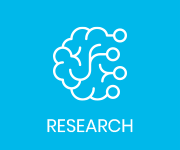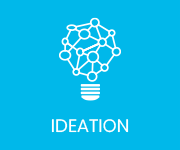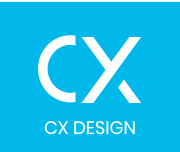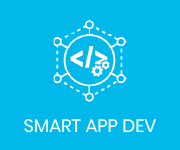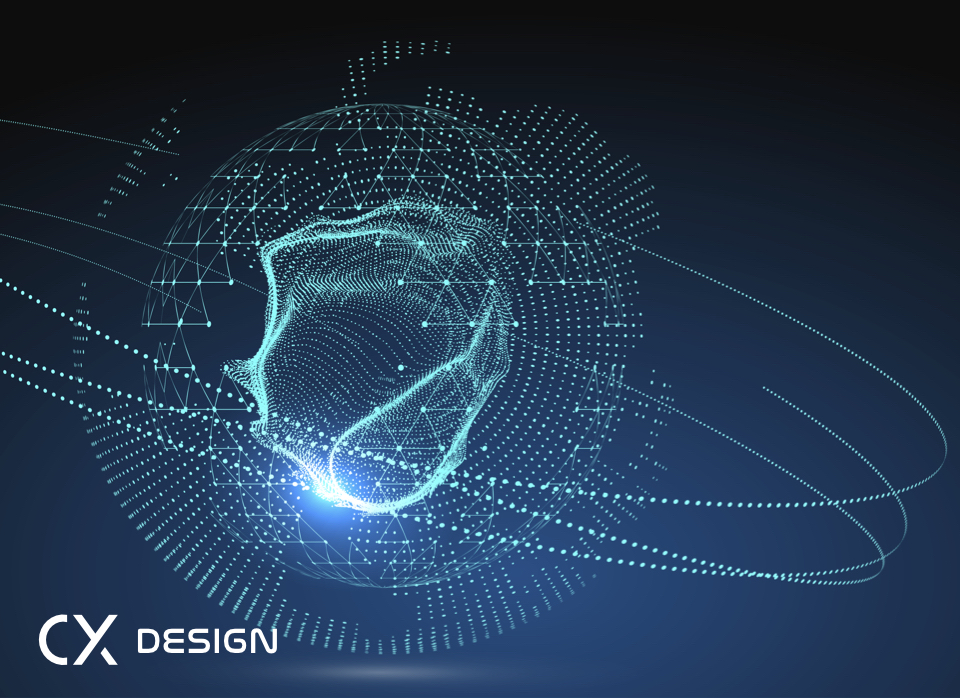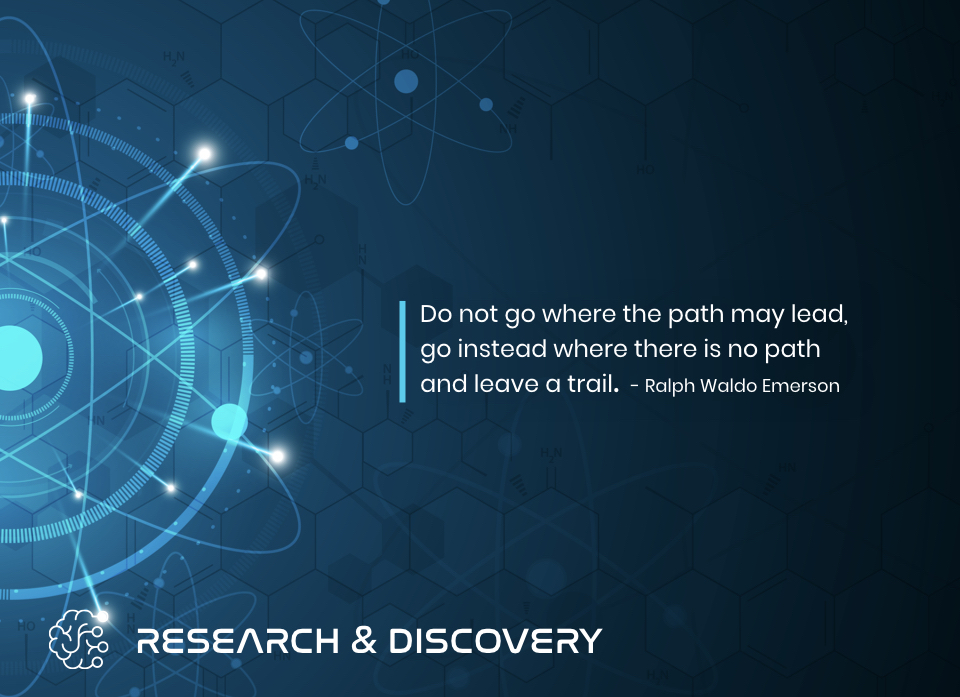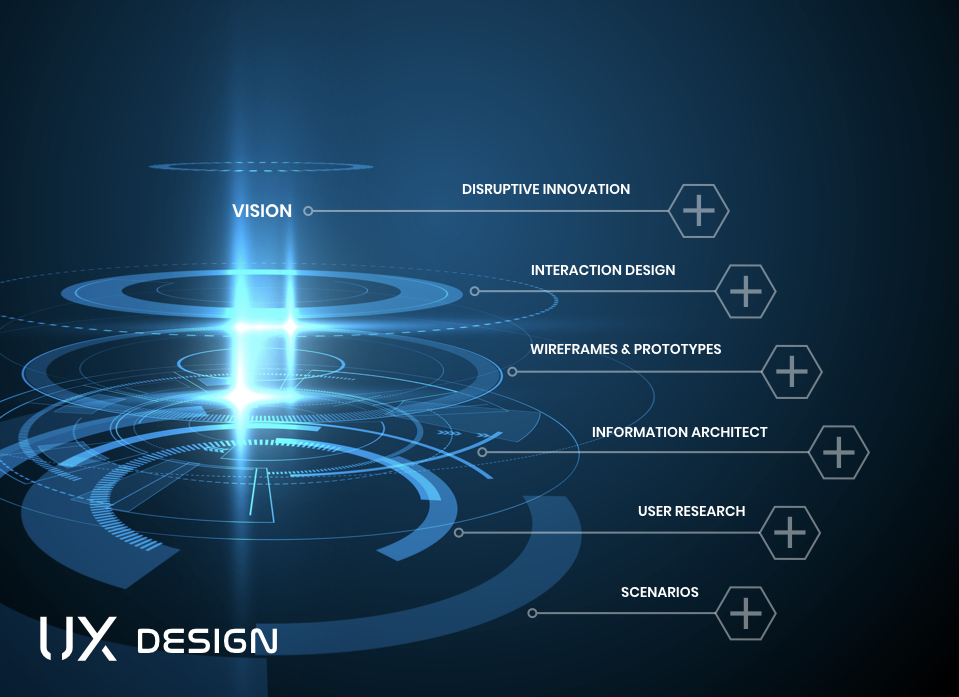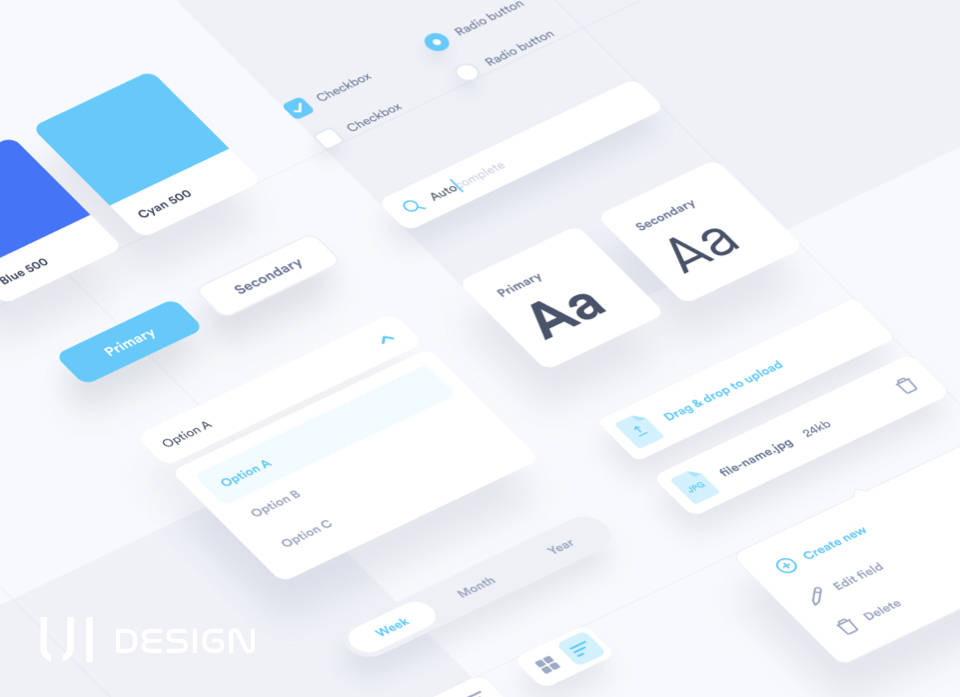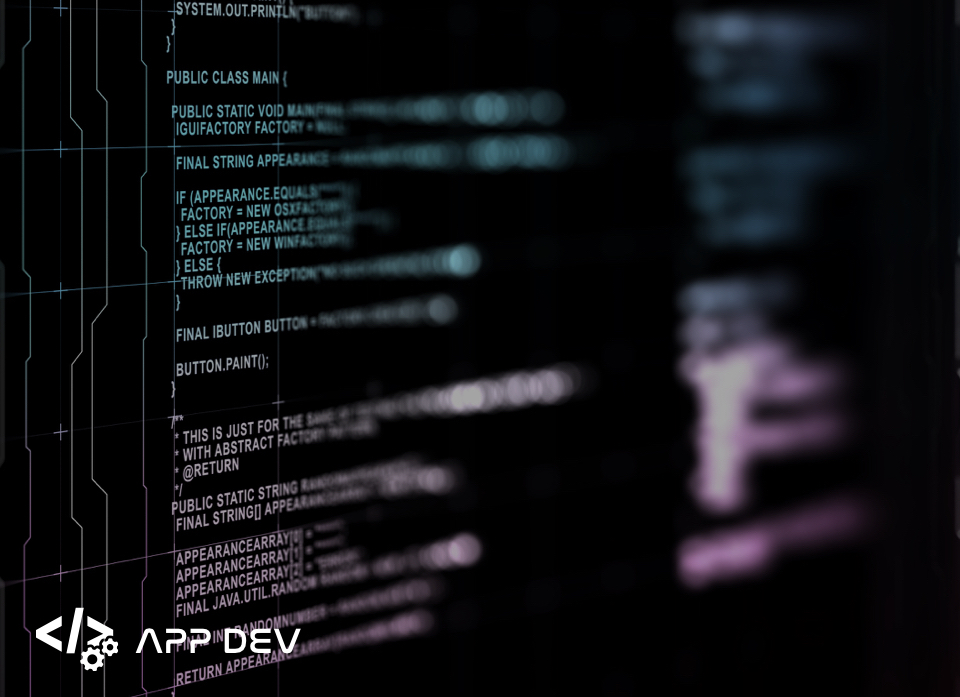CX DESIGN
Creating Immersive & Engaging Digital Experiences
Customer experience (CX) can be defined as the quality of all of a consumer’s encounters with a company’s products, services, and brand. While a strong customer experience produces significant results—more customers, more sales, and more loyalty—many companies still struggle to identify a plan of action to achieve these results.
Leaders can reach these goals if they focus on something more specific: the Digital Customer Experience (DCX).
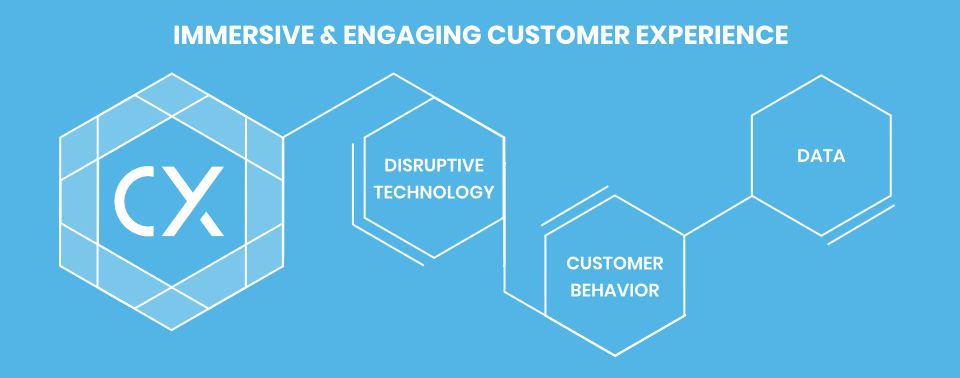
We work at the intersection of strategy, creativity and technology to help our clients digitally reinvent their businesses. Partner with us to define your strategy, create exceptional experiences and build your business, by design.
Overview
We believe that what you do matters more than what you say. Sovereign uses strategy, design and technology to create transformative experiences that impact your customers, your employees and your business.
Benefits

Improve customer loyalty, retention and employee engagement.

Align user-centric design to business strategy using IBM Design Thinking.

Leverage Sovereign’s CX design experts for commerce, marketing, AI and mobile.
Our CX Services
High-quality experiences are based on empathy, analytics and the right technology to engage customers and employees in meaningful ways. Sovereign helps you pioneer next-generation experiences that enable customer-driven growth.
Just like customers, no single project is alike, but here’s where Sovereign’s strategists, designers and digital experts specialize:
- Experience strategy and design
- Customer journey staging
- Experience strategy
- Design (UX, UI, Prod/Srvc)
- Customer and channel planning
- Brand and content strategy
- Digital commerce strategy and platform integration
- Marketing platform integration
- Mobile design and development
Why is CX so important?
The world of consumerism is changing. When trying to stand out from competitors, most companies have looked to their prices or the quality of their product for aspects that can be improved. However, the digital age has created a fast-paced and highly saturated market that has empowered customers to demand more than just an economical, high-quality product. In order to win their loyalty, consumers need to have an enjoyable experience with a brand or organization as a whole—not just with their product. This is where customer experience (CX), and customer experience design, comes into play.
According to the Adobe Annual Digital Trends Report, B2B companies consider customer experience (CX) as the most exciting opportunity for 2020. Another study found that, by the end of 2020, customer experience will overtake price and product as the key brand differentiator. So, for anyone working in the product or brand space, understanding CX is essential.
What is CX?
Customer experience, or CX, encompasses every single interaction a user has with a particular brand. The relationship between a customer and an organization is based on various types of interactions throughout many different points of contact. A customer’s experience doesn’t always start with the first use of a company’s product. There are often many touchpoints between the customer and the brand both before, after, and even during the consumer’s use of the product. A “good” customer experience usually means seamless and enjoyable exchanges from beginning to end.
Let’s use purchasing an iPhone as an example. As an Apple customer, the quality of your customer experience is not just determined by how pleasant it is to use an iPhone, but also what it was like to purchase it, how easy it is to contact support and access repairs, and even how captivating, entertaining, or effective their marketing campaign was. This is one area in which CX differs from UX.
CX design is the practice of creating smooth and efficient interchanges between a company and its customers. Customer experience can be broken down into three different parts: the single-interaction, the customer journey, and the lifetime relationship.
Single-interaction
The single-interaction experience is referring to the user’s experience when completing a single, select task. This level of CX describes the user’s short-term interaction with a specific product or service within a company. This aspect of CX is what most people would associate with UX or UI design.
Some examples of single-interaction experiences are ordering groceries using a store’s online app, cashing a check at an ATM, or signing up for a newsletter online. While single-interaction tasks may be dealing with the main service or product a company provides, these touchpoints are usually isolated events that make up a small part of the overall customer experience.
Customer journey
Customer journeys have a slightly broader scope than single-interaction experiences as they deal with the series of exchanges that take place to accomplish a goal over time. A customer journey often utilizes multiple modes of interaction across varying devices.
Let’s use ordering a new credit card as an example. Your journey may go something like this: You log on to your bank’s mobile app for assistance in requesting a new card. Next, you are connected with a customer service representative via telephone in order to complete the request. A few days later you receive the card in an envelope and need to use the ATM to activate it. Although you’ve only accomplished one goal, you have interacted with the company across multiple modalities. That is the essence of the customer journey.
Lifetime relationship
This aspect of CX has the broadest scope and takes into account every single interaction and touchpoint between the company and the consumer throughout their relationship. Unlike the customer journey and the single-interaction, the lifetime relationship doesn’t focus on one specific goal.
Instead, it focuses on all of the exchanges that take place between the customer and the organization. The quality of all of these exchanges determines what that person’s perception and opinion of the brand are in total. The lifetime relationship between both parties can include any advertising the consumer may have seen, their experience researching, buying, and using the brand’s products, what it was like to contact support services or obtain repairs, receiving messages or notifications from the company, or even what it was like to terminate a subscription or service.
CX design is focused on improving a customer’s experience with a company, at all touchpoints.
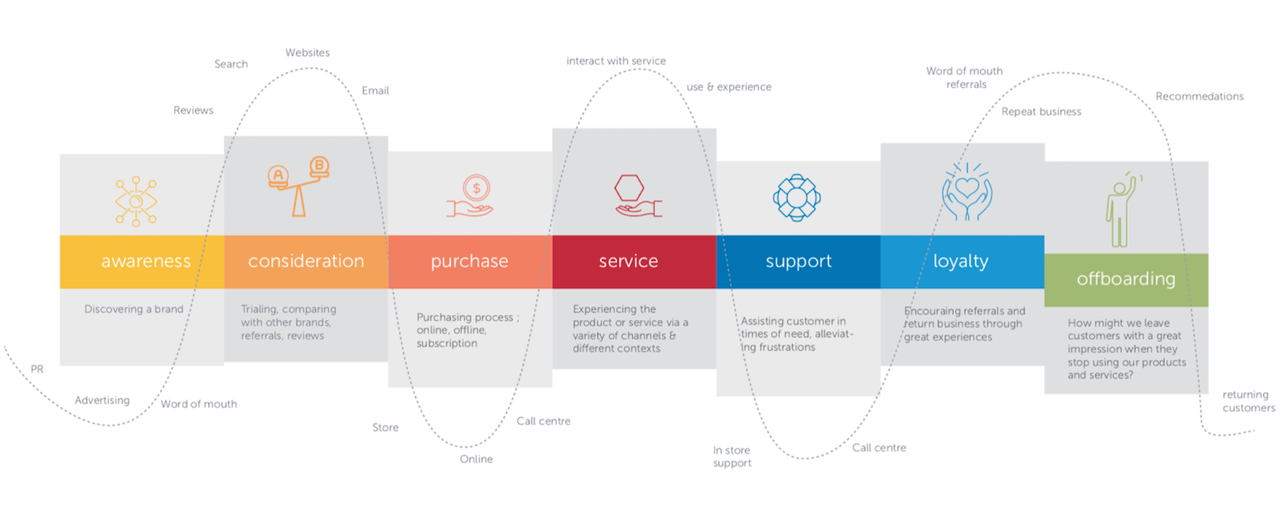
Co-create with your customers & test early to avoid costly development
Being customer-centric isn’t just about testing your prototypes. True customer-centricity comes from involving them in the actual creation of your product. An accurate and deep understanding of customer behaviour and mindsets can be learnt by spending a few hours mapping their experiences with your products.
Co-creating journey maps, empathy maps, proto-personas, testing prototypes early and ideating solutions together with customers will reveal and show you how to alleviate pain points. This process also helps you discover ways to bring new ideas to life that will be welcomed by customers, as they’re based on real needs and not on organisational assumptions.
Testing your ideas early and integrating user testing into the development cycle is an effective way to quickly validate and provide confidence that the product is moving in the right direction.
RESEARCH & DISCOVERY
Providing The RoadMap To Disruptiv Innovation
Achieving true disruptive innovation is not a one-person job, it takes teams with diverse backgrounds, unique perspectives and domain expertise to make creative visions a reality.
Innovation requires completely rethinking the way we perceive your current and future customers as well as acquire a deep understanding of current and future competition.
Our holistic approach provides unique data-driven insights of competitive offerings as well as targeted customer demographics, personas, habits, mindsets and trends.
IDEATION
Disruptive By Design – Customer-Centric Innovations
One of the most consistent patterns in business is the failure of leading companies to stay at the top of their industries when technologies or markets change.
Disruptive innovation requires a major shift in perspective, a moment when our everyday point of view is turned upside down, and the team finds a completely new ways of approaching challenges.
We start each client engagement with an in-depth discovery and ideation phase to immerse ourselves in your business objectives as well as identify opportunities for disruptive innovation.
UX DESIGN
Combining Strategic & Narrative Design Methodologies
Design Thinking is more than making something look beautiful. It also has to be intuitive and functional. If a website or app is beautiful but difficult to use, chances are users will never return.
Digital design has to serve the user and human-centered design has to solve the problems we face today and tomorrow.
That’s why User Experience (UX) design is at the heart of the future for Digital Customer Experience.
UI DESIGN
Pixel Perfect: The Perfection Of Interaction Design
Today, the bar for web and mobile app design has been raised. Both the UI and UX design need to work seamlessly together to provide an intuitive and personalized digital experience.
With, the exponential growth of mobile, web and IoT applications, UI design now plays a more pivotal role than ever in enhancing the overall User Experience (UX).
SMART APP DEVELOPMENT
Intelligent, Autonomous & Data-Driven Applications
The next-generation of Smart Apps are powered by technologies such as Artificial Intelligence (AI), Machine Learning (ML), IoT and Blockchain – delivered by a scalable cloud service architecture.
These Smart Apps are disrupting industries and decisively shaping unique and immersive digital user experiences.
Digital Innovation Delivered!
We design, build and deliver technology-based innovations that create significant competitive advantage and revenue growth potential for our clients.

